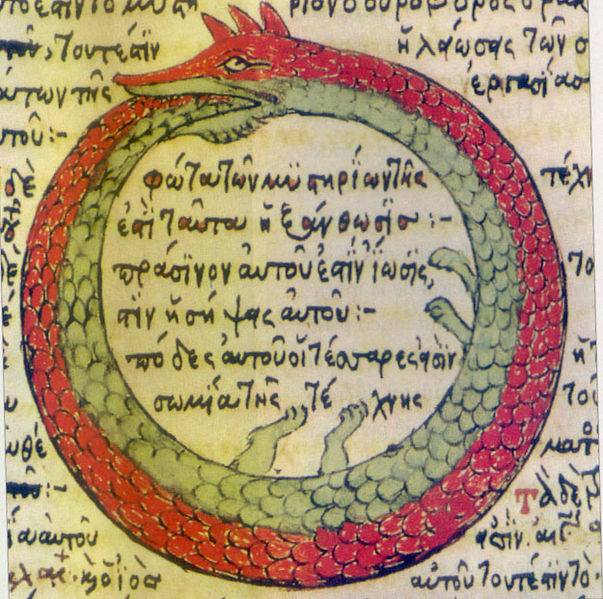'Are you speaking to me?' asks a frightened youngster to the middle-aged man sitting across her in the tube-train in London. He has been looking in her direction for fifteen minutes now, but not at her. She frowns and hides behind the novel in her hand. He continues his speak. He is speaking animatedly of colonial imports and exports from Jakarta, Indonesia and trade sea routes unacknowledged by historians of the imperial colonies. This man would be just another stranger going to work this ordinary morning, newspaper in hand if it weren't for this little detail. - that he is speaking to no-one in particular with devoted attention. The row of commuters sitting along him and opposite him become increasingly edgy and shifty from behind their book shields and tabloid shields. He would go on even when the train empties at the next station and I walk away feeling disturbed and unsettled by this incident. Consensus would conclude that such behaviour is aberrant. He must obviously be insane. This man was having a 'conversation' with the entire imagined people in the train coach, equally and unconditionally - a conversation where himself was the only person he was talking with yet is his thoughts were on offer to the 'all' that he was not speaking to. It makes me think of expressions of soliloquys and the vulnerable face of human expression that it brings to the fore. The soliloquy is often used as a theatrical technique to give the audience insight into the actor's thoughts while not being heard by the characters on stage. Imagine this theatrical trope trickling out of the stage and into everyday life where the listener is deposed and dispositioned.
The word 'Selfie' was declared the word of the year 2013 by Oxford dictionary. Self-timed photographs and selfies in the digital age seem be non-instituionalised familial descendants of the self portraits of artists we are so familiar with, be it Van Gogh or Amrita Shergill or Pushpamala N in present times. Selfies also speak with the similar unconditional command of the soliloquy. You don't wait for an audience - you are your own audience within your urgent condition.
Ingmar Bergman in his films Autumn Sonata(1978) and Persona(1966), makes his woman characters (brilliantly played by Liv Ullman, Bibi Anderson and Ingrid Bergman) engage in long, tumultuous soliloquies before the camera. The camera becomes the petrified spectator, as we watch and listen to the characters speak their most internal thoughts aloud naturally and circumstantially. Through the camera we witness them speak to no-one in particular yet to every-one. There is freedom from the tyranny of reciprocity in the narrative solely driven by unleashed moments of speaking to the void. Characters bathe in their own aura, after the ebb of hysterical deliriums, mostly from stubborn minds. ( The words 'aural' and 'aura' are in this matter not so far from each other. The soliloquy exists on that fine line that separates the etymology of the two words i.e a perception by listening in the former and a perception possible without listening in the latter.)
 |
| The listener exists in her absence |
Confronted by a person who doesn't care if you existed as their audience but at the same time whose being entirely depended on it, the listener is put into the most precarious of positions. We are taunted, dismissed and captivated. We exist precisely through our absence in the speaker's voice. In this moment of nakedness, no pretension, no protocol, no courtesy defends us from them - the soliloquists. Persona embodies this stubborn mind's wrath - when one chooses to speak/ not/ listen/ not/ talk/ not/ exist/ not/ react/ not/ remember/ not/ forget/ not/ record.
Woody Allen's latest film Blue Jasmine(2013) poignantly and eerily hinges on the image of Jasmine speaking to herself in delirious states. Succumbing to a traumatic past, she is entangled in a mental time warp, a kind of seizure ( allegorically in sync with the economic seizure of many countries at present ) that rewinds, forwards and tries to change the course of events in the past mentally but is ultimately condemned to exist within a looped soliloquy. The stranger sitting on the park bench next to Jasmine silently gets up and walks away as the camera edges away too, leaving Jasmine staring infinitely across and beyond the camera.
~
The silently clicked self-photograph is one small channel to this internal ebb - an acknowledgement of those modestly immodest times when you realize that 'this' right now, right here needs to be inscribed. You get over the inhibition of judgemental eyes and set your camera on a timer, find a suitably high ledge to place it on, and run back to position yourself within your inscription. The narrative is internalised. The listener is successfully made dispensable in the internal moment and pushed out into the every-one/no-one sphere, which is often social media - facebook/ twitter/ blog. This act gains strength in its willingness to reveal a weak moment in an increasingly singular world. Personal records get made by the second by this accumulative uploading of anonymous faces inscribed within their memorable moments. A vast tableau vivant emerges of rather vulnerable and helpless individuals battling their soliloquies where internal distances further away as physical distances collapse.
'Are you listening to me?'
 |
| Canon Self-timer - 10 seconds. Clicked at 3.17pm on Sunday, 24.11.13. Time to resume position - 6 seconds. Time to think - 4 seconds. [interiors] London, U.K |
PS: 'I dispose of you by being intimate and impersonal[..]' - Gertrude Stein
#interesting read - Bruce Andrews - Reading Language , reading Gertrude Stein







